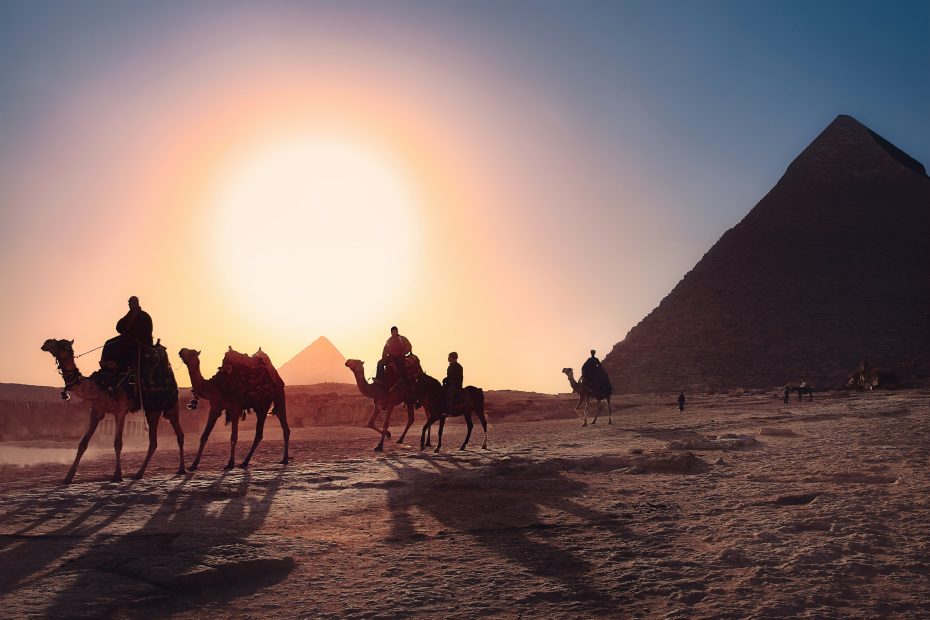Table of Contents
Introduction
The Nile River is the lifeblood of Egypt. Stretching over 4,100 miles, it has nourished civilizations for millennia. From Luxor to Aswan lies a section of the river that is packed with astonishing historical sites. This journey unveils some of the top wonders found along the great river. Get ready for a cruise into the very cradle of civilization.
Luxor – The Ancient Thebes
Our journey begins in the city of Luxor, site of ancient Thebes, capital of Egypt during its New Kingdom golden age. Must-see temples include Karnak, with its massive pylons and Hypostyle Hall, as well as the Temple of Luxor. These intricate shrines give hints into ancient Egyptian religion and power.
No trip to Luxor is complete without heading to the Valley of the Kings and Queens. Descend into these tombs and behold the magnificently decorated walls, still vivid after thousands of years. Will you dare enter the tomb of King Tutankhamun? His golden treasures and famous burial mask await inside.
Beyond the temples and tombs, don’t miss the striking Colossi of Memnon. These giant twin statues of Pharaoh Amenhotep III have sat gazing eastward for over 3,400 years. Luxor’s juxtaposition of immense ancient monuments with modern city life makes for an unforgettable visit.
Cruising the Nile
After exploring the ruins and artifacts of Luxor, it’s time to set sail down the Nile. Traditionally, wooden felucca sailboats transport tourists downriver, their white sails billowing in the breeze. For more luxury, opt for a larger Nile cruise ship with amenities like pools and spas. Either way, prepare for scenic vistas around every river bend.
Time seems suspended as you drift past farmers working their fertile green fields just as their ancestors did centuries ago. Riverbanks are dotted with palm groves and small villages of mudbrick houses. Your cruise takes you further back in time with each passing hour.
Kom Ombo Temple
Around 30 miles south of Luxor lies the temple complex of Kom Ombo, dramatically situated on the east bank of the Nile. Dedicated to the crocodile god Sobek and the falcon god Horus, it boasts a symmetrical duality reflecting the two deities worshipped here. Notably, ancient priests at Kom Ombo mummified crocodiles as sacred offerings.
Beyond the splendid reliefs and statuary, Kom Ombo’s location makes it ideal for watching the sun set over the Nile’s waters. The temple glows with golden light at dusk, a magical atmosphere.
Aswan
Further south, Aswan marks the end of most cruises. It boasts another IMPRESSIVE temple called Philae, dedicated to the goddess Isis. Philae was partially submerged after construction of the Aswan Dam but was salvaged and relocated to a nearby island. A highlight is the temple’s First Pylon with carvings of Isis and her son Horus.
Aswan was the source of the red granite used for monuments like the imposing Unfinished Obelisk. This massive obelisk cracked while being carved from quarries during the reign of Queen Hatshepsut. Walk around this massive stone to imagine its creation.
Beyond the ancient sites, Aswan offers the chance to experience Nubian culture. These friendly descendants of an ancient civilization offer a warm welcome. From lively markets to folk dances, Aswan ends the journey on an intercultural note.
Abu Simbel
For an awe-inspiring bonus, travel west of Aswan to visit the reclaimed temples of Abu Simbel. Ramses II built these mammoth rock-cut temples to himself and his wife Nefertari. When the Aswan High Dam was constructed, the entire site was moved piece by piece to higher ground. Gaze up at the imposing four statues of Ramses II fronting his temple – an unforgettable icon of ancient Egyptian power.
Wrapping Up the Journey
This voyage along the Nile gives but a glimpse into thousands of years ofEgyptian history and culture. From the bustle of Luxor to Abu Simbel’s testament to ego, the riverbanks contain endless wonders. The Nile itself remains timeless, flowing past relics of fallen civilizations even as new ones arise upon its fertile floodplain. Much awaits discovery on your next journey down its waters.
Conclusion
From the breathtaking monuments of long-dead pharaohs to river vistas unchanged for millennia, a cruise along the Nile from Luxor to Aswan unveils many of Egypt’s marvels. Temples, tombs, and statues pay tribute to ancient gods and rulers. The river’s lifeline persists to nourish both ancient relics and current ways of life. This journey lays bare only a fraction of the wonders awaiting along the Nile Valley. An expedition from vibrant Luxor to Nubian culture in Aswan provides an ideal taste to inspire further exploration.
FAQs
What is the best time of year to take a Nile cruise?
The cooler months from October through March are ideal. Summers can be extremely hot.
What is the difference between sailing on a felucca vs a cruise ship?
Feluccas are traditional wooden sailboats. They offer an intimate experience but lack amenities like plumbing. Cruise ships provide luxury with pools, spas etc.
What should I wear when visiting temple sites?
Modest, loose-fitting clothing that covers knees and shoulders is recommended. Hats and sunglasses also help in the bright sun.
What vaccinations are needed for a Nile cruise?
Hepatitis A, typhoid, and tetanus shots are recommended. Malaria pills may also be prescribed.
What are some tips for staying safe in Egypt?
Use a licensed tour guide, dress conservatively, avoid political gatherings, and beware of scams targeting tourists. Check government advisories.
